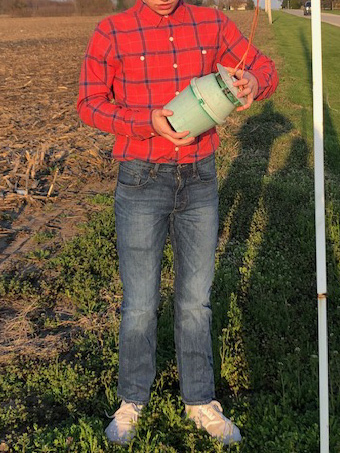EDITOR’S NOTE: Cameron, sophomore in high school, has agreed to take over his dad’s monitoring during this reprieve from formal education. Because of his interest in entomology, he wrote the following article, to remind us why we trap for these moths every spring. We welcome other 9-12 (biology and agronomic) citizen scientist’s contributions, including pictures/drawings, let us know (obe@purdue.edu).
Black cutworms migrate from Mexico and Texas to the Midwest during the months of late February to June. This insect affects many crops such as strawberries, sugarbeet, and rice. Although in the Midwest the black cutworm is considered to be one of the most major pests of corn. Black cutworms severely damage juvenile corn plants.
The damage caused by this pest is most severe when corn is less than six inches in height. They normally would cut a small hole just below the surface of the soil then would pull it under the surface to then feed on the plant. It is important to monitor or keep track of the black cutworm because the information collected from monitoring will tell the farmer when the peak of this pest should arrive. Monitoring now helps with integrated pest management for later on in the season.
References:
http://entnemdept.ufl.edu/creatures/veg/black_cutworm.htm
https://extension.entm.purdue.edu/fieldcropsipm/insects/black-cutworms.php
http://extension.cropsciences.illinois.edu/fieldcrops/insects/black_cutworm/



